- Churchill Tax
Selling A Business Or Just Its Assets – What’s The Difference?

Your business stopped trading some months ago and you recently received an offer for the lease on your former trading premises and equipment. What’s the VAT position and how should this be dealt with in the sale agreement?
VAT and closed businesses
When a business closes permanently it isn’t the end of its VAT obligations if it was registered when it ceased trading. Whether the business or its assets are sold, or they are transferred to the business’s owners, there may be VAT to account for.
VAT or no VAT?
If you’re selling a going concern you must not charge VAT. Conversely, if you sell a collection of business assets you must consider the VAT treatment of each asset separately. For example, if the asset is a property which is new or you have opted to tax, you must charge VAT, otherwise it’s an exempt supply and so you mustn’t charge it.
TOGC or sale of assets?
What counts as a transfer of a going concern (TOGC) for VAT purposes isn’t the same as it is for direct tax or accounting purposes. In plain English “going concern” implies a trade which is current and solvent at the time a business is sold but neither of these conditions is necessary for it to be a going concern for VAT purposes.
TIP:
The key test for determining if a sale is a TOGC is whether the assets you sell can alone be capable of operating as an independent business.
TIP:
If your business (or the part you’re selling) ceased to trade for whatever reason, even if it was insolvent, it can still count as a going concern for VAT purposes which means you shouldn’t add VAT to the sale price as the transaction is outside the scope of VAT.
TRAP
Another important condition for a sale to be a TOGC is that the buyer must be registered or be liable to be registered for VAT.
Similar businesses
A good example of when a ceased business can still be sold as a going concern for VAT purposes is the case of Deezer Limited v HMRC [2017] ) (D v HMRC). The company purchased a defunct fish and chip shop plus all its equipment and then ran a similar business under the same name. Because D bought all the assets of the old business which were sufficient to allow it to trade, the transaction was a TOGC .
The contract
The sale/purchase contract should always include clauses that set out the VAT position accepted by each party plus indemnities to protect each against financial loss should HMRC successfully challenge the position.
TRAP
It’s your responsibility as the seller to decide if the sale is subject to VAT or not. If you get it wrong you’ll be the one picking up the VAT bill and having to recover the cost using the indemnity. That can be difficult, for example, if by the time the correct VAT position is established the buyer is no longer trading or can’t be reached.
Conclusion
If alone the assets you sell allow the buyer to run a business, the sale is a “transfer of a going concern” and you shouldn’t charge VAT. If not, VAT should be worked out separately for each asset. If you get it wrong you’re responsible for any VAT shortfall. Therefore, ensure the sale contract includes an indemnity to allow you to recoup this cost from the buyer.
